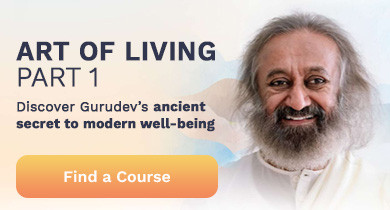“I was diagnosed with PCOD almost 15 years ago. When the doctor first told me, I was scared. I had doubts whether I would ever have kids. My friend was a yoga teacher, and I started learning the practice from her. Slowly, my acne was gone, and I didn’t have too many mood swings as before. I’m now 30 and a mother of two healthy kids. Life has never been so beautiful.”– Ruchika Ahuja, a homemaker.
Ruchika is just one of the many women in the world with Polycystic Ovarian Syndrome or PCOD, which is a common occurrence today in women of reproductive age. A study by the All India Institute of Medical Sciences reveals that one in every ten Indian women suffer from PCOD. Although PCOD has not yet been attributed to any specific cause, most doctors believe it to be a result of stress – a fallout of the modern-day unhealthy lifestyle.
Eliminating stress from our day-to-day life may be impossible, but we can surely build up our capacity to deal with it. This is where natural treatment alternatives like yoga and meditation help.
Symptoms of PCOD
- Irregular or no menstrual cycles at all
- Frequent hair loss and excess hair growth on the face, back, stomach, arms, and legs
- Heavy acne
- Frequent mood swings
- Weight gain
- Infertility
Yoga for PCOD
The science of yoga works at levels much subtler and deeper than just the physical body. Yoga asanas help open up the pelvic area and promote relaxation while pranayamas help calm the mind. Add meditation to the list, and you have a comprehensive detoxification and stress-relieving system in place. Practicing Sudarshan Kriya also helps take care of negative emotions and mood swings.
Dr. Sejal Shah, a Sri Sri Yoga expert recommends the following yoga poses for PCOD.
- Butterfly Pose
- Supta Badhakonasana
- Bharadvajasana
- Chakki Chalanasana
- Shavasana
- Padma Sadhana
- Sun Salutation
Relaxation is the key to treating PCOD. Ensure to relax in each asana by coordinating it with breathing. Take long and deep breaths as you perform each posture.
Note: All yoga asanas should be carried out at a professional yoga class under the guidance of a certified yoga teacher. Do not practice postures that put extreme pressure on the abdomen.
Tips to reconnect with nature
- Eat organic food and avoid junk food.
- Drink lots of water.
- Exercise regularly.
- Take steps to calm your mind. Worrying about the problem can only make it worse – listen to music, read or spend time gardening.
Yoga exercises for PCOD and infertility
- Butterfly Pose can be beneficial in PCOD. Don’t flap your legs too much; instead, try holding the posture for long.
- Even more helpful is Supta Badhakonasana (Reclining Butterfly Pose). It works just like the Butterfly Pose, but this time while lying down. This is what makes it incredibly relaxing. To enhance the experience, play some soft music and place cushions under your hip. For beginners, it is a good idea to use cushion support while doing this posture.
- Bharadvajasana (Bharadvaja’s Twist) is a seated spinal twist that helps PCOD patients.
- Chakki Chalanasana (Moving the Grinding Wheel) is a simple exercise with several benefits. It massages the liver, kidneys, pancreas, uterus, and reproductive organs.
- Shavasana (Corpse Pose) is another useful posture to try. In PCOD, the more you relax, the better you feel, and this posture will help you completely unwind at the end of your yoga session.
- Padma Sadhana practice is also considered very useful for PCOD patients.
- Make sure you don’t hold the postures that put pressure on the abdomen (Bow Pose, Superman Pose, Cobra Pose and Boat Pose) for a long time.
- A few rounds of Sun Salutation at a faster pace can be useful for weight loss; however, it is a good idea to practice only a few slow rounds daily for more relaxation.
Women suffering from PCOD tend to put on more weight, and these poses help to keep the weight in check. Dr. Shah says, “Even if you manage to lose just 5-10% of the body weight through regular yoga and meditation practices, you will feel a lot better. It relaxes your mind and eases you of the stress of weight gain, which, in turn, helps in regularizing your monthly cycles. In PCOD, it is important to give sufficient time every day to yoga and meditation.”
She adds that it’s a good idea to do a few minutes of Nadi Shodhan pranayama (Alternate Nostril Breathing) and Bhramri pranayama (Bee Pranayama) daily for a few minutes. Through the medium of breath, these pranayamas help release stress in mind.
Meditate and see the difference
Since stress starts in mind and slowly its effects can be seen in the body as well, it is essential to address this issue at the mind level. This can be done with meditation. The American Medical Association has conducted scientific research which establishes numerous health benefits of this practice.
“When we introspect deeply, healing happens from within,” says Dr. Shah. A few minutes of sitting still with eyes closed is incredibly relaxing, and also gives you the right perspective to find solutions to the problem than keep worrying about it.
Most women, when diagnosed with PCOD at a very young age right after they attain puberty, become confused and frustrated. Integrating yoga and meditation at an early age in life can help us attain a disease-free body and a healthy mind.
Sudarshan Kriya for PCOD
Shares Sarina Mahboobani, a PCOD patient for nine years, “For me, the main problem has been acne all over my face, and it is so frustrating! But I never took any medication. I only take care of my diet, have lots of fresh food and salads, drink lots of water, and exercise. On days my body feels bloated and heavy, and I feel extremely inert, my daily practice of Sudarshan Kriya helps. It gives me energy and enthusiasm, and I feel so much better.”
Sarina adds that Sudarshan Kriya also greatly helps in handling mood swings, irritability, and negative emotions. A healthy diet, exercise, yoga, and meditation has helped Sarina control her symptoms and prevented the problem from getting worse. She also has less acne to worry about now.
Science and spirituality go hand-in-hand
Modern science has also started accepting the growing importance of yoga and meditation in treating several lifestyle disorders such as diabetes and PCOD. Doctors now recommend a few minutes of pranayama and meditation practice to their patients along with prescribing medication for the PCOD treatment. Dr. Chhaya Patil, an obstetrician and gynecologist at Fortis Hospitals, says, “In today’s age, you need to combine science with spirituality for better results. Both need to run parallel.”
Although the exact cause for PCOD remains unknown, thankfully you have treatment options available. With yoga and a natural, holistic way of life, you can choose to do something about it. However, you will need to be regular with your practice to reap its benefits.
And the good news is the number of benefits you reap is directly proportional to the amount of effort you put into your yoga practice. So even if you start with a little effort, it will pay off!
Long and consistent yoga practice is all you need to quit worrying about PCOD.
The Art of Living Meditation and Breath workshop has the perfect combination of asanas, pranayama, and meditation to enhance your well-being. Experience the benefits now.
Practicing Yoga helps develop the body and mind, yet is not a substitute for medicine. It is essential to learn and practice yoga under the supervision of a trained Yoga teacher. In case of any medical condition, practice yoga only after consulting your doctor and a Sri Sri Yoga teacher.
FAQs on Yoga for PCOD
By practicing yoga for PCOD regularly you can get rid of many symptoms associated with PCOD.
Yoga poses for PCOD are: Butterfly Pose, Supta Badhakonasana, Bharadvajasana, Chakki Chalanasana, Shavasana, Padma Sadhana, Sun Salutation
By consistently practicing yoga for PCOD you can get rid of many symptoms associated with PCOD. You have a better quality of life.
Reclining Butterfly pose opens up the pelvic area, strengthens the inner thighs and promotes relaxation in PCOD. It improves blood supply to the reproductive system.
Shankh mudra and vayu mudra are good for dealing with PCOD effectively. Meditating after this is suggested for better results.
PCOD symptoms can be managed by practicing yoga for PCOD. Overweight and obese women by practicing yoga regularly can balance their hormones and manage weight.





























